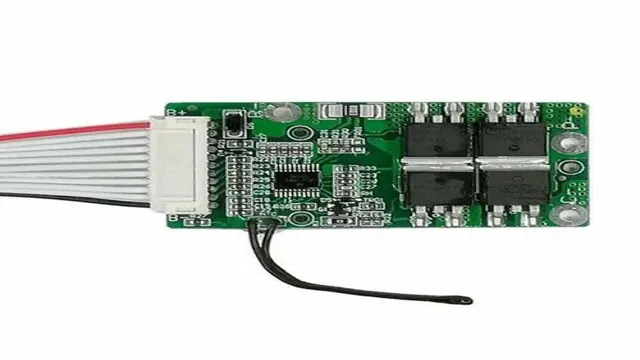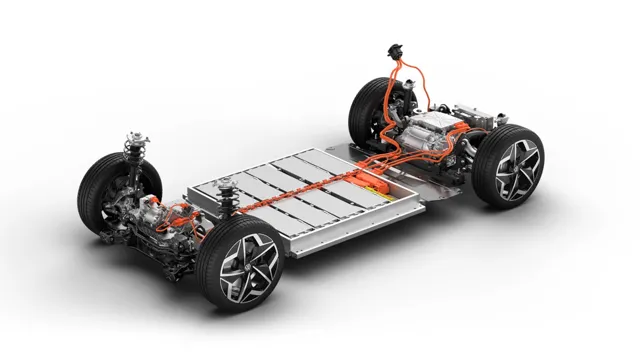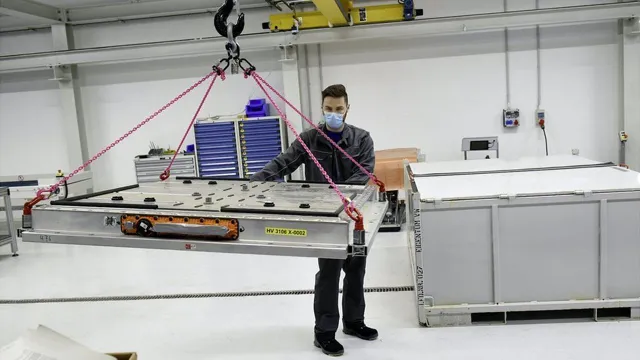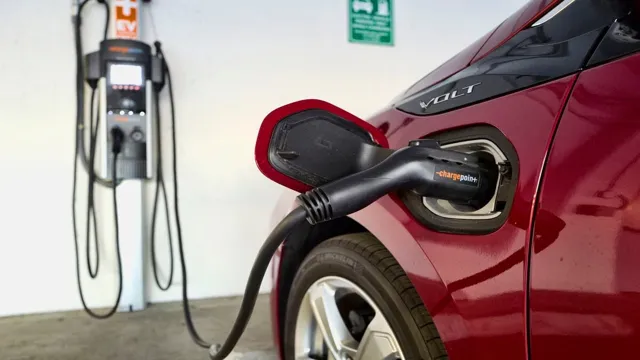Revolutionize Your DIY Electric Car with an Efficient 48V Battery Management System
Are you looking to electrify your ride without breaking the bank? Do you want to customize your own battery management system for your electric car? Look no further than a DIY 48V Battery Management System! While electric cars are becoming more affordable and accessible, the cost of batteries can still be a significant barrier. But with a little knowledge and some basic tools, you can create your own battery pack management system for a fraction of the cost of a commercial system. A 48V system is a popular choice for electric car conversions, offering a balance of power and efficiency.
And with a DIY approach, you can tailor the system to fit your specific needs and preferences. Plus, it’s a great opportunity to learn more about the inner workings of your car and gain a new skillset. But where to start? There are plenty of resources available online, including step-by-step guides and forums for DIY electric car enthusiasts.
It may take some trial and error and a bit of patience, but the payoff in terms of cost savings and personal satisfaction can be well worth it. So, why not take the leap and embark on your own electric car DIY project with a 48V Battery Management System? Your wallet, and the environment, will thank you!
Understanding Battery Management Systems
As electric vehicles become more commonplace, the need for efficient battery management systems becomes increasingly important. A battery management system, commonly known as BMS, is a key component in any electric vehicle’s power system. It manages and monitors the health of the battery pack, ensuring that each cell is operating at optimal levels.
For a 48V DIY electric car, a BMS is crucial to ensure proper charging and discharging of the battery pack, preventing overcharging and over-discharging, which can lead to reduced battery life and potential safety hazards. Additionally, a BMS can provide real-time monitoring of the battery pack’s state of charge and capacity, allowing for better range estimation and ensuring that the electric vehicle is always ready for use. Installing a high-quality BMS in a DIY electric car is a wise investment that ensures the longevity and safety of the battery pack, ultimately contributing to the vehicle’s overall performance and efficiency.
Why a Battery Management System is Important
Battery Management Systems (BMS) When it comes to powering our electronic devices, batteries are definitely the go-to option. However, if not managed properly, they can also be the cause of accidents and malfunctions. That’s where a Battery Management System (BMS) comes in handy.
Essentially, BMS is an electronic circuit or microprocessor-controlled device that monitors and manages the state of individual battery cells within a battery pack. It ensures that the battery is charged or discharged within safe limits, prevents overcharging and over-discharging, and maintains the battery’s overall health and longevity. In other words, a BMS is like a traffic controller for your battery, keeping it on track and ensuring that it doesn’t go haywire.
So, whether it’s for your phone, laptop, electric vehicle, or even home energy storage systems, a properly functioning BMS is a must-have to keep your batteries working safely and efficiently.
How a Battery Management System Works
A Battery Management System (BMS) is an electronic system that monitors and manages the performance of a rechargeable battery or battery pack. Its primary function is to ensure the safe and efficient operation of the battery. The BMS continuously monitors various parameters such as voltage, current, and temperature to determine the state of charge of the battery and protect it from overcharging, over-discharging, over-temperature, and short circuits.
When the battery is being charged, the BMS controls the charging process to prevent overcharging or undercharging, which can cause damage to the cells. During discharge, the BMS controls the discharge rate to avoid over-discharging, which can lead to a shorter lifespan of the battery. Overall, the BMS plays a vital role in managing the performance and optimizing the lifespan of rechargeable batteries.
Choosing the Right Components
Battery management system for a DIY electric car is a crucial component that ensures the safety and efficient operation of your electric vehicle. Choosing the right BMS for your 48V system can be daunting, but it is critical to ensure that it matches not only your electrical requirements but also your budget. Some of the things to consider when choosing a BMS include voltage range, capacity, and communication protocols.
You also need to consider the BMS’s features such as overcharge protection, cell balancing, and temperature monitoring. A good BMS should be reliable and easy to install, saving you time and money. Remember that compromising on the quality of your BMS may lead to severe consequences, including damage to your battery and injury to yourself.
Therefore, always invest in a quality BMS that meets the specific needs of your DIY electric car.
Key Components for a DIY 48V Battery Management System
Choosing the right components for a DIY 48V battery management system is crucial to ensure it functions effectively and safely. When it comes to battery management systems, there are several key components to consider, including the Battery Management System (BMS), the battery charger, and the battery pack. The BMS is the brain of the system and is responsible for monitoring and controlling the battery’s charging and discharging process.
A reliable BMS will prevent overcharging, over-discharging, and ensure that the battery operates within a safe temperature range. The battery charger used in the system must be compatible with the battery pack and provide an optimal charge rate. Lastly, the battery pack itself should be constructed with high-quality, durable cells that offer a high energy density.
Taking the time to choose the right components for your DIY 48V battery management system is essential for optimal performance and safety.
Factors to Consider When Choosing Components
When it comes to building a computer, choosing the right components can make all the difference. Some factors to consider include compatibility with your other components, the purpose of your computer, and your budget. It’s important to do your research and understand the specifications of each component, such as CPU speed and RAM capacity, to ensure they fit your needs.
Another thing to consider is the brand and reputation of the component manufacturer, as well as any warranties or customer support they offer. Keep in mind that while it may be tempting to go for the latest and greatest components, they may not always be necessary for your particular needs and could end up costing you more. By carefully considering these factors, you can choose the right components for your computer and ensure optimal performance and longevity.
Recommended Brands and Products
When it comes to building a computer, choosing the right components is crucial for both performance and longevity. There are many brands and products on the market, but not all of them are created equal. Some of the most recommended brands for computer components are Intel, AMD, NVIDIA, ASUS, and MSI.
Intel and AMD are popular choices for processors, while NVIDIA is a go-to for graphics cards. ASUS and MSI are reliable options for motherboards and other components. However, it’s important to remember that the specific product within each brand can vary greatly in terms of quality and features.
When selecting components, it’s important to consider factors such as compatibility, performance, and budget. Additionally, researching reviews and comparing options can help ensure that you make the best choices for your specific needs. By selecting high-quality components, you’ll be able to build a computer that runs efficiently and meets your requirements for years to come.
Building and Installing Your Battery Management System
If you’re looking to build your own electric car, it’s important to have a reliable battery management system in place. One option is to build your own system. This will require some technical know-how, but it is possible with the right tools and resources.
First, you’ll need to choose the right battery cells for your needs, considering factors such as voltage, capacity, and cost. Once you have your cells, you can begin building your battery pack and wiring it up to your car. From there, you’ll need to program your battery management system to monitor and control the flow of power.
This will ensure that your battery remains safe and efficient, and that you’re able to get the most out of your electric car. While building your own battery management system can be a challenging project, it’s also a rewarding way to customize your electric car and gain a deeper understanding of its inner workings. With some patience and perseverance, you can create a reliable and effective system that will power your car for years to come.
Step-by-step Guide for DIY Installation
If you’re looking for a cost-effective way to keep track of your battery’s performance, building and installing your battery management system might be the perfect solution. Don’t worry; it’s not as complicated as it may seem. You don’t need fancy tools or specialized knowledge.
Start by gathering all the necessary components for your battery management system, such as the control board, shunt resistor, and voltage sensor. Then, create a layout plan based on your battery’s configuration and size. Next, mount all the components onto a sturdy board and connect them to the battery.
Don’t forget to properly insulate all the components and ensure that all wires are securely fastened. After installation, you can easily monitor your battery’s performance and avoid costly failures with regular maintenance. Building and installing your battery management system might seem like a daunting task, but with proper planning and attention to detail, you’ll have a reliable system in no time.
Common Pitfalls to Avoid
When it comes to building and installing your battery management system, there are certain common pitfalls that need to be avoided. One of the most important things to keep in mind is to ensure proper wiring. Bad wiring can lead to unnecessary losses in power, and even result in battery failure.
It is crucial to use thick, high-quality wires that can handle the current load and avoid any short circuits due to faulty connections. Another important point is to avoid overcharging your batteries. Overcharging can lead to a decrease in battery life, and even damage the cells permanently.
It is important to set up a system that monitors the battery charge level and stops charging before it reaches the maximum level. Additionally, it is important to ensure that your battery management system can handle the specific chemistry of your batteries. Different batteries have different voltage and charge requirements, and your system needs to be set up accordingly.
By keeping these common pitfalls in mind, you can ensure that your battery management system is set up correctly and runs smoothly.
Maintaining Your Battery Management System
If you’re building a DIY electric car that uses a battery management system (BMS) rated for 48 volts, it’s important to understand how to properly maintain it. One of the most important things to keep in mind is to regularly check the state of the cells in your battery pack. Over time, individual cells can become damaged or degraded, which can lead to imbalances between cells in the pack.
If left unaddressed, these imbalances can cause additional strain on other cells and ultimately lead to premature failure of the battery. Additionally, ensure that your BMS is properly calibrated and configured to suit the specific needs of your car’s electrical system. Finally, be sure to follow all manufacturer recommendations for care and maintenance of your BMS to ensure it performs reliably for years to come.
With proper attention and maintenance, your BMS can help you achieve peak performance from your electric car.
Tips for Battery Maintenance
Battery Management System When it comes to proper battery maintenance, keeping your battery management system functioning properly is key. Your battery management system, or BMS, is responsible for regulating the charging and discharging of your battery to ensure it stays within safe operating parameters. To maintain your BMS, regularly check the connections and wiring to ensure they are secure and clean.
Additionally, monitor the voltage and temperature of your battery regularly to ensure they stay within acceptable ranges. Regularly cycling your battery through a full charge and discharge can also help ensure your BMS is functioning properly. By properly maintaining your BMS, you can help extend the lifespan of your battery and prevent potential malfunctions or safety concerns.
Troubleshooting Common Issues
Maintaining Your Battery Management System is crucial for ensuring the optimal performance of your batteries and prolonging their lifespan. One common issue that arises with battery management systems is inaccurate battery monitoring, which can lead to undercharging or overcharging of your batteries. To avoid this, make sure to calibrate your battery monitor regularly and double-check the readings to ensure they are accurate.
Another common issue occurs when battery cells become imbalanced, causing some cells to overwork, overheat, or even short out. Regularly check and balance your battery cells to avoid this issue and ensure that all cells are working at their optimal level. Finally, make sure to maintain your battery management system by cleaning and inspecting it regularly, as well as ensuring that all connections and components are securely fastened.
By properly maintaining your battery management system, you can avoid common issues and increase the overall lifespan and performance of your batteries.
DIY Success Stories
If you’re looking for a DIY project for your electric car, creating a battery management system for a 48v battery pack might be just the challenge you’re looking for. With some basic knowledge of electronics and a bit of patience, many people have successfully built their own battery management systems to ensure optimal performance and longevity of their electric vehicle’s batteries. By monitoring individual cell voltages and balancing the charge across the battery pack, a homemade battery management system can help extend the life of your batteries and prevent any dangerous malfunctions.
Some have even gone on to share their success stories and plans online, providing a helpful resource for others interested in taking on this project. So if you’re up for a challenge and willing to put in the effort, consider experimenting with a DIY battery management system for your electric car.
Inspiring Stories of DIY Electric Car Builders
DIY electric car builders If you have ever considered building your own electric car, you’re not alone. Many people are embracing the DIY movement and building their own vehicles to save money, reduce their carbon footprint, and have the satisfaction of creating something incredible. There are countless success stories of individuals who have successfully built their own DIY electric cars from scratch.
One inspiring story is that of Jesse and Ali, a couple who built their own electric car for under $10,000. They used a salvaged Honda Civic and replaced the internal combustion engine with an electric motor. They installed batteries and a controller, and after months of hard work and determination, they had a fully functional electric car.
Another success is that of Ben Nelson, a high school student who built a solar-powered electric car. He used a kit to build the car’s chassis and then installed the electric motor and solar panels. The car can travel up to 40 miles per hour and can go up to 30 miles on a single charge.
These inspiring stories prove that anyone can build their own electric car with hard work, dedication, and a little bit of know-how.
How a DIY Battery Management System Helped Them Achieve Their Goals
Have you ever wondered how a DIY battery management system could help you achieve your goals? Well, we’ve got a success story for you. Meet John and Sarah, two off-grid enthusiasts who decided to build their own battery management system to power their tiny home. They were tired of relying on expensive pre-built systems and wanted more control over their energy usage.
With some research and a lot of hard work, they managed to create a custom system that fit their specific needs and budget. The key to their success was choosing the right components. They opted for a modular system that allowed them to expand as needed, and they used high-quality batteries and charge controllers to ensure maximum efficiency.
But the real magic came in the form of their custom monitoring software. By tracking their usage patterns and adjusting their settings accordingly, they were able to squeeze every last drop of power out of their batteries. The end result? They were able to power their entire home with clean, renewable energy and save thousands of dollars in the process.
Plus, they had the satisfaction of knowing they had built something truly unique and tailored to their needs. So if you’re looking to go off-grid or simply want more control over your energy usage, consider building your own battery management system. With a little bit of know-how and a lot of determination, anything is possible.
Conclusion
In conclusion, a battery management system is like the brain of your electric car. Just like how your brain tells your body what to do, the BMS ensures that your batteries are working properly and are being used efficiently. It’s not something you want to DIY unless you really know what you’re doing – otherwise, you might end up with a shocking surprise.
So, leave it to the experts or a pre-built system to take care of your batteries, and let your electric car be the eco-friendly ride of your dreams.”
FAQs
What is a battery management system for a 48v DIY electric car?
A battery management system (BMS) is an electronic system that manages and monitors the rechargeable batteries in an electric car. It ensures that the batteries are charged correctly and prevents them from overcharging or over-discharging, which could potentially damage the batteries and lead to safety hazards.
How does a BMS work in a 48v DIY electric car?
A BMS constantly monitors the state of the batteries and controls the charging and discharging process to prevent overcharging or over-discharging. It also communicates with other systems in the car to provide information about the battery pack status, temperature, and overall health. This data can be used to maximize the battery lifespan and ensure safe operation of the vehicle.
What are the benefits of using a BMS in a 48v DIY electric car?
A BMS provides several benefits, such as increasing the battery lifespan, improving the overall performance of the car, and ensuring safety. By preventing overcharging and over-discharging, the BMS can extend the battery life by several years. It can also optimize the charging process and improve the range of the car. Additionally, the BMS provides critical information about the battery pack, which can be used to diagnose problems and ensure safe operation of the vehicle.
Can a BMS be retrofitted into an existing 48v DIY electric car?
Yes, it is possible to retrofit a BMS into an existing 48v DIY electric car. However, it may require some modifications to the electrical system of the car and installation of additional sensors and connectors. It is important to consult with a qualified electrician or mechanic to ensure that the BMS is installed correctly and does not cause any safety hazards.






